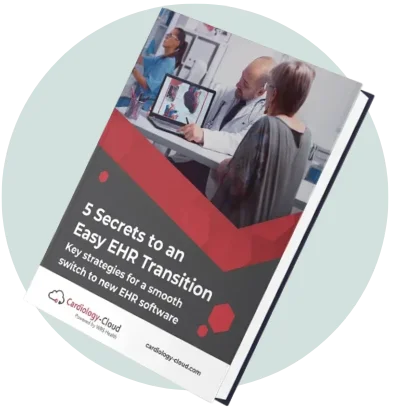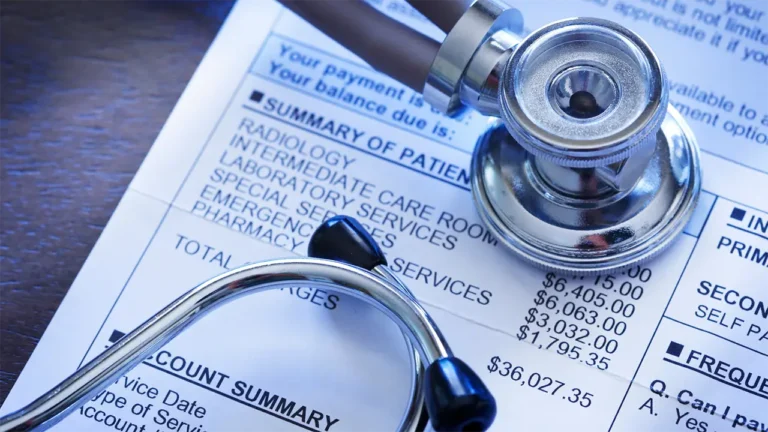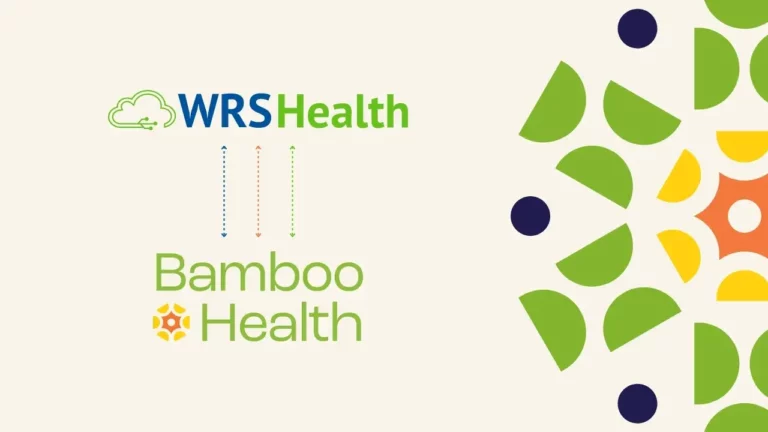Key Takeaways
- Assess your existing platform to identify what could be improved.
- Provide thorough staff training to familiarize the team with the new cardiology EHR.
- Partner with experienced software providers to ensure smooth data migration and ongoing support.
- Getting ready to switch your cardiology EHR? Use our guide for successful implementation.
Your EHR is an integral part of every patient’s healthcare experience. From check-in and communications to labs, imaging, and scheduling follow-up visits at the time of service, software that is intuitive, secure, and functional is key.
The right EHR is crucial for your practice. Once the decision is made to make a switch to a new cardiology EMR platform, careful planning and attention are required for a smooth transition that minimizes disruptions and sets your practice up for success. Though it can be an overwhelming undertaking, with support and intention, it can be an exciting time for your practice.
As you transition to the best EMR for cardiology practices, here are some key steps and considerations to help you along the way.
Table of Contents
Preparing to Switch Your Cardiology EHR
Start your implementation with a detailed assessment of your practice’s needs. Evaluate the limitations of your current system and define the key features you want in your new cardiology software. This approach helps build a clear transition roadmap, ensuring the new system supports your operational goals.
Consider the following during your preparation:
- What issues does your team face with the current system of record?
- Are there specific workflows that require streamlining?
- What kind of EHR template customization does your team require?
- What compliance requirements must the new platform address?
- Are there any issues with the current patient portal experience?
Answering these questions ensures the new EHR platform meets both your practice and patient care needs.
Required Tools and Resources
To switch to new cardiology software successfully, focus on four core areas:
- Data migration: Ensuring a secure and accurate transfer of patient records is crucial to prevent data loss or corruption. Work with an experienced EHR provider like Cardiology-Cloud, which offers seamless, error-free migration at no cost.
- Comprehensive training: Equip your team with hands-on training, reference materials, and ongoing support to boost system adoption and minimize errors. Studies show that well-trained healthcare professionals experience less stress, make fewer errors, and show improved efficiency when using a new EHR.
- Vendor support: Choose a vendor that offers full onboarding assistance and continuous support to address challenges during and after implementation. A reliable partner not only ensures smooth integration and quick troubleshooting but can also provide support for compliance and even marketing. Consolidating your practice management solutions with a single vendor helps streamline operations and keeps your office running at its best.
- IT infrastructure readiness: Assess your hardware and network capabilities to confirm compatibility with the new EHR. You may need upgrades to support advanced features and optimize system performance.
Focusing on these elements ensures a seamless transition and maximizes the benefits of your new EMR for cardiology.
4 Steps to a Seamless Cardiology Software Switch
- Set your timeline: Define a realistic transition schedule with clear milestones for data migration, training, and system testing.
- Involve your team: Engage staff early in the process to gather feedback, encourage buy-in, and ease the transition.
- Test the system: Before going live, run thorough tests to identify and resolve potential issues. Simulate real workflows and test patient record access, billing functions, and system usability.
- Have a backup plan: Anticipate challenges by having contingency measures in place. Keep temporary access to the old system or alternative work options to minimize downtime and mitigate risks.
Cardiology-Cloud CLIENT
"The ability to customize WRS templates increases our staff’s efficiency. For example, the technician enters her information when we perform an echocardiogram. The clinic staff performs Coumadin checks in the clinic, and they can enter the information their way. The templates can be customized to meet everyone’s needs.”Trupti Patel, Practice Manager
Heart & Vascular Clinic
Getting Ahead of Cardiology EHR Transition Challenges
Switching to the best cardiology EHR can involve tackling issues like data compatibility or staff resistance to change. Predict and address these challenges by:
- Working with vendors who have experience and a strong reputation in healthcare data migration.
- Providing continuous staff training to build trust and skill with the new system.
- Communicating why the new system will bolster the practice, emphasizing ways it can simplify workflows, improve cardiology practice management, reduce administrative burden, and improve patient outcomes.
Data migration, in particular, can be challenging, as practices must ensure patient information security and consistency throughout the process. Working with an experienced vendor can help reduce these associated risks.
Excel with the Best EMR for Cardiology
Just as every patient seeks the right fit when choosing their cardiology provider, each practice must be discerning about finding the right cardiology EHR platform for their team.
The best cardiology system of record provides the tools you need to streamline operations, maximize revenue, and improve patient care. When it’s time to transition systems, you can implement a solution that supports your practice’s goals by creating an intentional plan and communicating with everyone involved.
With the right strategy and a well-chosen platform, your practice can achieve a seamless transition that enhances efficiency, boosts financial performance, and elevates patient care.









